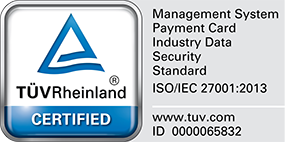
When scaling a business, there are two vital equations founders should be thinking about: Business and People.
The Business Equation
There are three key variables in this equation: Finding the right problem, Building the right solution, and going to market.
To find the right problem to solve, start by asking yourself some questions will help you better understand the problem you want to solve, and more importantly, who your target market is. Different demographics in different regions may face the same problem differently and prefer a different solution. Therefore, it is crucial for you to have in-depth conversations with a wide range of potential customers to better define what problem you want to solve for what target market. Some example questions may include:
- When do people encounter the problem?
- Why do these demographics in specific regions face the problem?
- How frequent do people encounter the problem?
- What is the annual growth of the problem (is the market growing)?
Once you have better defined the problem and your target market, use your critical thinking skills to find the right solution before you start building it. You might have to build a product or a service, or maybe both. Again, ask yourself and your future customers questions to make sure that you are building something that they want and need.
Before investing too much resources on your idea of a perfect solution, quickly build and test out a minimum viable product (MVP) and then iterate your MVP with your target market to find the right mold of the solution for the problem. Once you’ve had enough feedback and feel confident that the product you’ve built will be beneficial for the greater market (beyond your test group), find the best way to reach them. Finding the right channel is just as important as building the right solution. Once you have the solution in hand, you need to understand how to make your solution accessible in the most appealing way for your target market.
The People Equation
Once you’ve decided what business you want to build, you’ll need the right people to help you build the solution. Learning about the problems that come with scaling with people has common pitfalls may help you avoid these pitfalls. Here are some common breaking points when scaling with people:
- 30-50 people: The whole team no longer fits in a room and you need to implement dreaded “processes” to make meetings and information dissemination more efficient.
- 100-150 people: Company will start feeling larger since not everyone will know each other on a personal level and non-executive managers may start feeling more pressure.
- >300 people: Resource allocation can start to get feudal since there will be more than 1 layer between CEO and the lowest level and there begins a transition from owner to employee.
- >500 people: You’ll need to start setting up a structured hiring process and HR needs to be robust enough to think about how to retain and provide growth for existing employees.
Scaling people
Beyond scaling quantity, it is important to scale the quality of the people within your company. There are a couple ways to make sure that your people grow alongside the business.
Hiring and managing people is key to growing:
Hiring the right people and firing toxic people is key, and learn the importance of leveling in hiring. Even though bureaucratic, leveling is important. Make sure to define what different levels of a role looks like and what is expected from each role at each level.
Specialization:
Being a jack of all trades can be useful in small startups when talent is scarce. Once there’s enough talent and scale, it is important to ensure there’s vertical growth within each person’s function so they can have deep enough knowledge and skill to innovate
Develop leadership skills:
Prime ideal candidates to be managers, growing your internal management bench is a good way to grow. Learn to hire people better and far more experienced than you.
As a leader, you need to continue scaling and improving yourself as you move towards other roles and responsibilities. Some processes that can be helpful for you to try to grow as a leader:
- Delegate: You should strive to replace yourself and go tackle bigger and better things and think about how to help yourself and employees feel great about no longer doing the same job. Delegation may be difficult because of the commitment you’ve made to the product/team you have been building. Molly Gram, who helped Google and Facebook scale, talks about giving your legos away, a metaphor to children who freak out when you take away their toy only to be given something different (and possibly better).
- Audit: Auditing processes and tasks can help you identify what is unnecessary to free up time but can be hard because it may result in changing some routines and habits.
- Prioritize: Remember to prioritize the important yet non-urgent things: Health, family and relationships. The important things in life are most often are marathons, not sprints, which we often realize a little too late.
Furthermore, it is important to grow your ability to grow other people. Find good mentors with the right experience and commitment to your growth. Surrounding yourself with like-minded individuals who are in the similar space (role, industry, etc.) can help you find solutions outside of your perspectives. Finally, reading books and daily can be a great way to help you explore and learn new ideas while giving you personal space and time.
Before you are a leader, success is all about growing yourself. When you become a leader, success is all about growing others.
— Jack Welch
Scaling product innovation
It might take multiple quarters to go from “We’re figuring things out” to “Here are our targets, our dependencies”, it won’t happen immediately after a quarter so don’t force things to happen to quickly. A common practice is to spend 80% of your time executing and 20% exploring.
| Explore | Exploit | |
| Strategy | Radical or disruptive innovation, new business model innovation | Incremental innovation, optimizing existing business model |
| Structure | Small cross-functional multi-disciplined team | Multiple teams aligned using Principle of Mission |
| Culture | High tolerance for experimentation, risk taking, acceptance of failure, focus on learning | Incremental improvement and optimization, focus on quality and customer satisfaction |
| Risk Management | Biggest risk is failure to achieve product/market fit | A more complex set of trade-offs specific to each product or service |
| Goals | Creating new markets, discovering new opportunities within existing or adjacent markets | Maximizing yield from captured market, outperforming competitors |
| Measure of success | Achieving product/market fit | Outperforming forecasts, achieving planned milestones and targets |
Source: Humble, Molesky and O’Reilly, Lean Enterprise: How High Performance Organizations Innovate at Scale; pg. 25
Scaling process
As your company (business and team) grows, people will have to make more decisions with less thorough information (startups often see employees transition from knowing everything to not knowing anything), be sure to set up good principles and communication processes to ensure good flow of information within the company.
Decision making
Make sure that you define roles using tools like RAPID and a RACI matrix so that it is clear who is in charge and has the authority to make certain decisions. As the company grows, a lot of people feel ownership and want to be consulted. It might also be helpful to systemize the decision making process to make the process more formal and easy to follow for anyone who may not have the authority to make decisions. With a growing organization, it might be tempting to set up unnecessary meetings and therefore setting meeting protocols can help clarify the objectives of the meeting and save time. Setting meeting protocols would encompass defining who will come (mandatory or optional), who will be presenting and bringing the material, if people can leave in the middle of the meeting and most importantly, how information will be shared across the organization after the meeting.
Communication
It is important to disseminate right information to the right people through the right channels. Start with your company’s principles, is it clear to everyone where the company is going, how you will get there and what their individual roles are in taking the company to succeed. Not all information is helpful for everyone, so segregate information by what only team leads need to know, what must all management know and what should be common knowledge for everyone.
Additionally, make sure that you are using the right channels and tools for the right people to get the information they need. You could use an all-hands meeting where everyone would attend, leadership meetings, team meetings and skip-levels meetings. You could also share written communications in the form of weekly reflections because the employees appreciate feeling like they hear directly from the CEO. Depending on your audience, writing a wiki might be helpful, engineers and content creators may appreciate a DevOps and Content Ops wiki.
Before you scale, make sure that you define your company’s values. Good values helps employees make hard decisions, and may not be something that everyone agrees with. When you don’t have a bird’s eye view of every decision and conversation that happens within your company, make sure that everyone knows what is important and what should be the moral compass to base their decisions on. This moral compass usually stems from good sets of values.
This article was written as a summary of our fireside chat with Shiyan in an invitation-only event for Xendit’s valuable customers.
Shiyan is Managing Partner at Hustle Fund; a pre-seed firm founded by former 500 Startups partners Elizabeth Yin and Erich Bahn. Prior joining Hustle Fund, Shiyan was the VP of Business Operations and Corporate Development at NerdWallet, a personal finance company where she was employee #10, and now worth in excess of USD500 million.
Shiyan holds an MBA at Harvard Business School and a BA from Stanford University. She writes blogs in her spare time.













